Tutorial Rules
The basic needs of the game are a place to play, a sack of army men, a tape measure or yardstick, and a six-sided dice (D6). Realism is not a goal, only fun.
The Squad
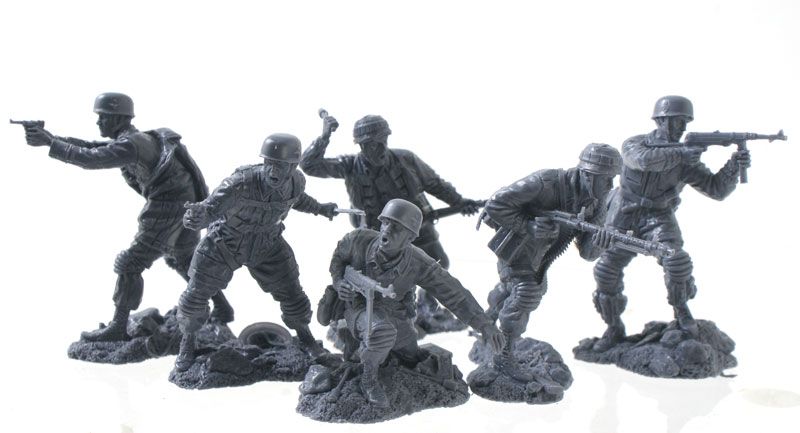
To start, pick 6 regular troopers that look cool. These guys are going to teach you how to play the game.
Movement and Equipment
Each army trooper is assigned three attributes: Movement and Range in inches, rate of fire in number of rolls.
| movement (inches) | range (inches) | rate of fire (n) | |
| regular soldier | 6 | 20 | 1 |
Setup
The players need a table or some clear space on the floor.
Deployment
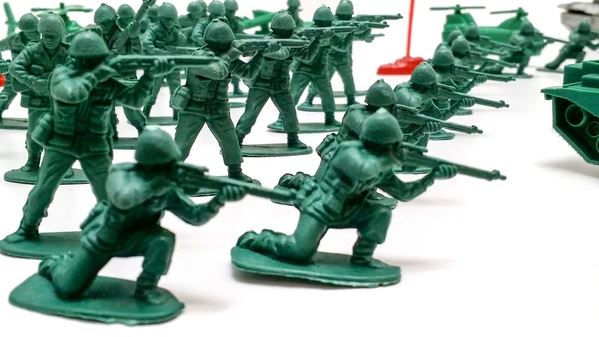
Setup your squad 24" away from your opponents squad, with all members no more than 4" apart.
Turn Description
Play is handled in turns, in each turn, a player may have each of their troopers take one action step (they may also choose to do nothing). An action step consists of two parts: Shooting and action. If the trooper is to shoot, they must shoot before moving, this is to give the advantage to a fixed position/ambush setup.
Phase 1: Shooting
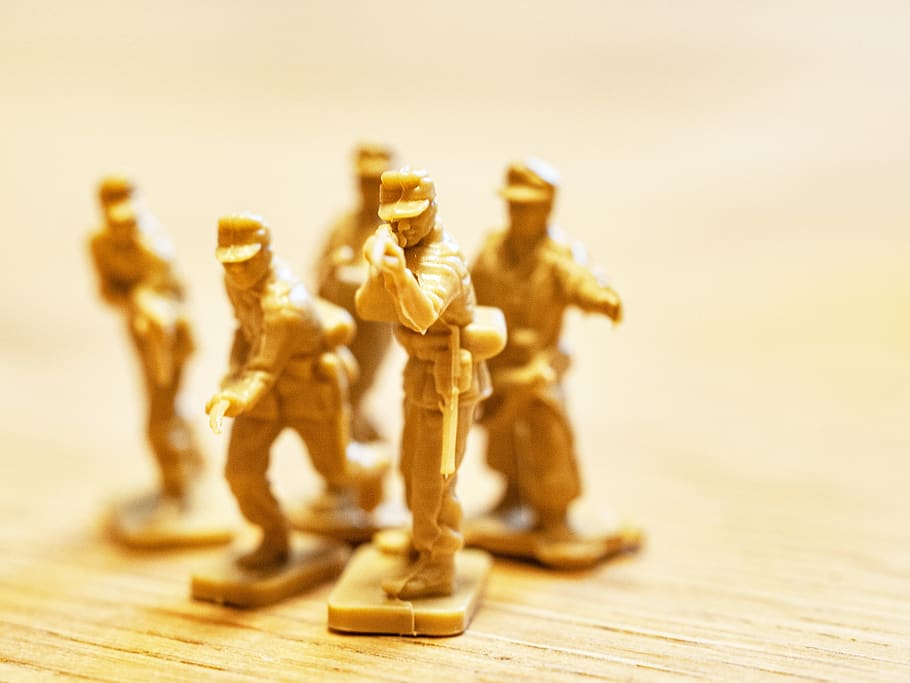
Shooting proceeds as follows: Select an enemy trooper as the target, then use the tape measure to determine if they are in range, and if there is a line of sight between the two troopers. If these conditions are met, the shooter rolls one dice per rate of fire, and kills the enemy trooper on a roll of 5+ if the enemy is in range, and 4+ if the enemy is within 1/2 of the maximum range.
Firmly Planted
If the shooter did not move in the previous turn, it is easier to aim and recieve a +1 modifier (e.g. a roll of 4 at a distance greater than half the shooters range would hit).
Moving Target
If the target moved in the previous turn, they are harder to hit and recieve a -1 modifier (e.g. a roll of 5 at a distance greater than half the shooters range would miss).
Friendly Fire
Either player may choose to target troopers in combat, but after rolling to hit in the usual way, 1D2 is rolled to determine which combatant is hit (1 is your trooper, 2 is theirs).
Phase 2: Movement
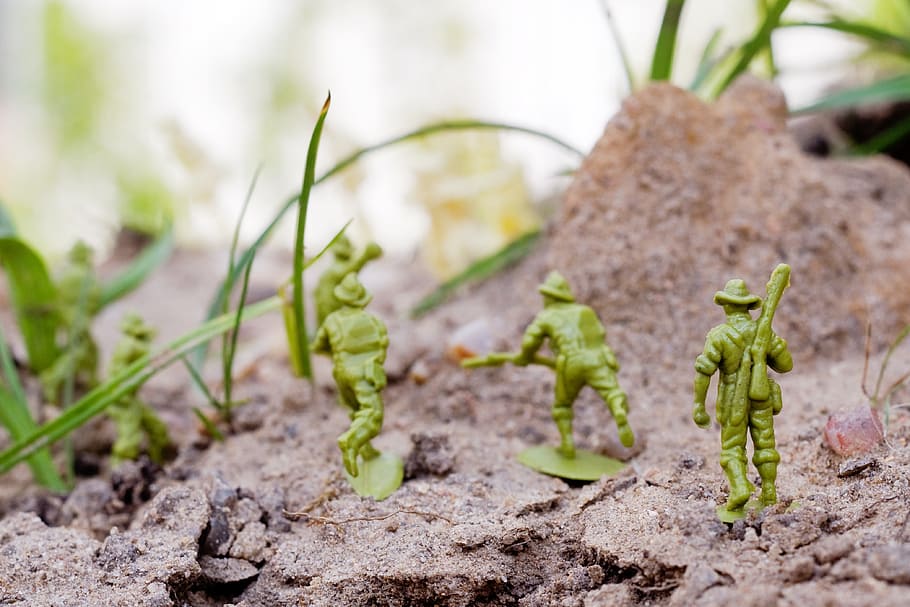
For movement, the trooper can move any distance up to the rated movement number of inches, and movement does not need to be in a straight line. They must stay within 4" of another squad member. Troopers moving beyond the edge of the table cannot be returned to play.
Phase 3: Combat
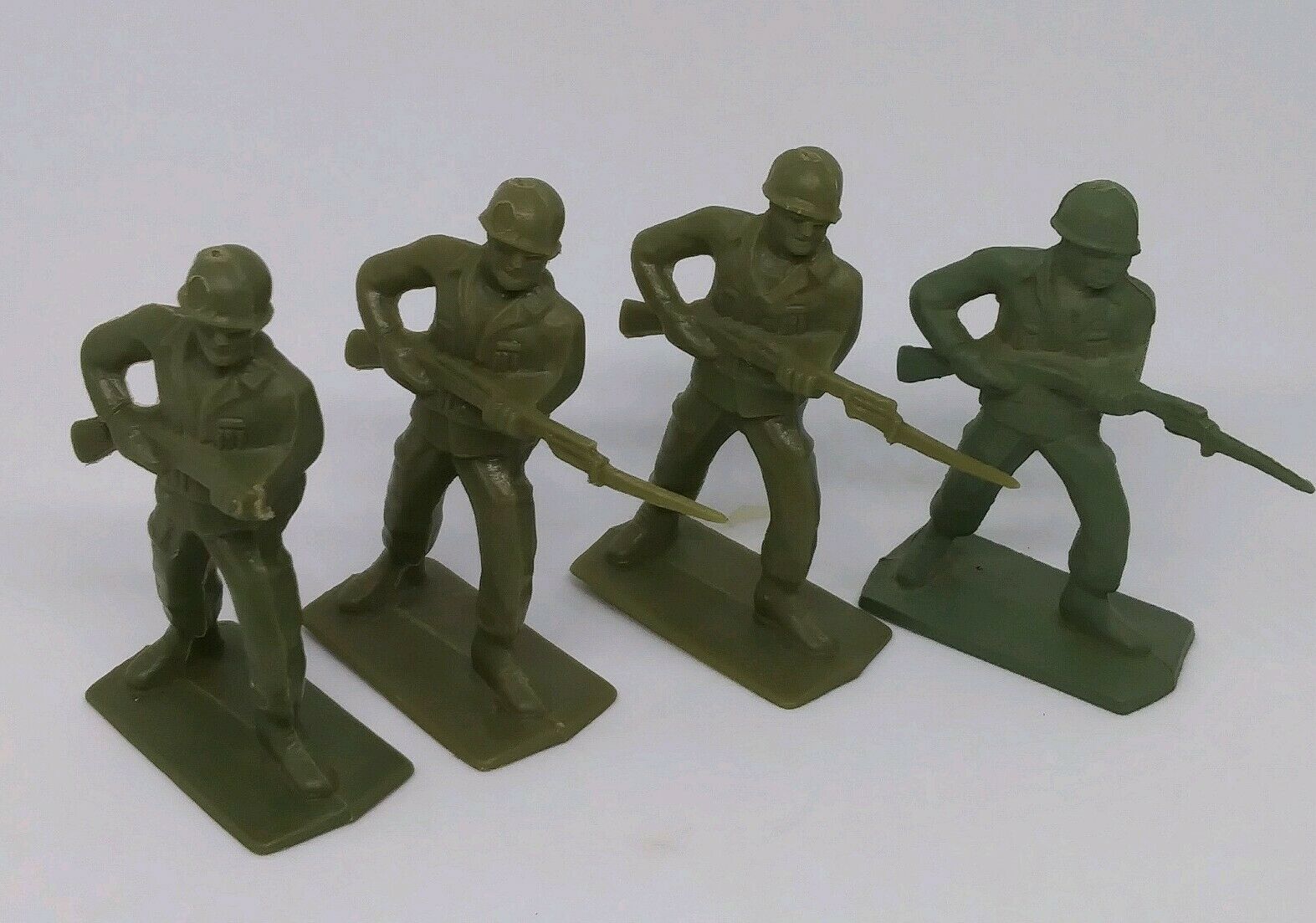
If two opposing troopers come into contact, they will fight hand-to-hand, both players will roll 1D6. The attacking player adds a +1 modifier to his score to account for inititiative. The lowest scoring trooper will die. In the event of a tie, the fight will continue into the next turn. In the next turn, the attacked trooper can choose to run away, or continue the fight, but may not shoot. If the combat continues the scoring has no modifier.
Ganging Up
If the number of combatants on either side is not equal, apply a +1 modifier for each additional trooper (e.g. if one trooper is fighting three, the single trooper rolls regularly, but the three troopers all get a +2 modifier for their hits). The results of each pair is determined seperately.
The Inevitable End
When a trooper dies, they are removed from the table. Dead troopers cannot be returned to play.
Standard Rules
This a more extended framework for the game outlined above. This will allow for more flexibility and customization. Also, this is intended to be a framework and we can update it as necessary to address balance issues, and add new features.
Setup
The players need to set up the board and create armies before the game can start.
Terrain
Setup consists of clearing the table, and setting up any desired obstacles with books, cans, legos, whatever is handy. Both players should agree on obstacle placement. In addition to placement, players need to agree on which elements provide cover. Players should also agree on a scenario (example below) or the goal/setting of the engagement, points value of their respective armies, and terms of victory (annihilation, capture the flag, etc.).
Cover
If any trooper is more than half concealed by terrain they are considered in cover, and is has a +1 modifier to hit (e.g. if a trooper is within half range the shooter would need to roll a 6 instead of a 5+). If a target trooper is at more than half range (and in cover), they are considered safe from fire. Vehicles do not benefit from cover due to their size.
Possible Scenario: Capture the Flag
Agree on a location and place a marker on the board to designate a strategic objective. Roll 2D6 to determine the number of troopers (sargents, regular guys, etc.) you need to have within 1D6 inches at the beginning of 1D3 turns for that player (e.g. 7 troopers within 4" of the marker for the start of 2 turns to win the game).
Army Creation
To keep things as even as possible a point system is explained below. Decide on a total number of points for the competing armies before you start. They don't need to be the same if for example one army is defending a base and has cover.
Troops
Squads are 5-10 troopers. Each squad can include a sargent. A normal squad may have up to two special weapons in it (e.g. 2 submachine guns, 2 heavy weapons, or a combination). All members must be within 2" of another squad member.
| point value | max number per squad | |
| sargent | 20 | 1 |
| regular soldier | 10 | 10 |
| sniper | 20 | see note |
| submachine gunner | 20 | 2 |
| heavy | 30 | 2 |
note: a maximum of 3 snipers are allowed per army
Movement and Equipment
Each type of army trooper is assigned three attributes: Movement and Range in inches, rate of fire in number of rolls.
| movement (inches) | range (inches) | rate of fire (n) | |
| sargent | 6 | 20 | 2 |
| regular soldier | 6 | 20 | 1 |
| sniper | 3 | 40 | 1 |
| submachine gunner | 6 | 10 | 3 |
| heavy | see table below | ||
Snipers
Prone men have half the movement, but double the range of a standing army trooper. Regular men cannot be switched back and forth with prone men. For simplicity, kneeling men are considered to be standing.
Area Effect Weapons
Area effect weapons (except grenades) are heavy and hard to move, so the trooper cannot fire and move in the same turn. When shooting an area effect weapon, the shooting player selects a target trooper (must have line of sight to aim), all troopers (on any side) within 6" of the target trooper must roll 1D6 and if a 6 is rolled, that trooper is toast.
| movement (inches) | range (inches) | rate of fire (n) | |
| mortar/bazooka/rpg | 2 | 40 | 1/2 |
| grenedier | 6 | 10 | 1 |
| flamethrower | 3 | 10 | 1 |
Vehicles
There are some vehicles that your army can be outfitted with like boats and tanks. They are useful for different scenarios.
Tanks
Tanks can be utilized for heavy support in your army. Their movement, range, rate of fire, point value, and number allowed in an army are listed below. They have 10 hits and can only be damaged by heavy weapons.
| movement (inches) | range (inches) | rate of fire (n) | points | number allowed | |
| Panzer/Sherman | 10 | 30 | 1 | 100 | 1 |
Powerful Gun
The main gun of a tank is powerful and has two additional attributes. The first is area of effect which uses the same rules as listed above.
Armor
Regular guns aren't going to cut it here. Heavy weapons are necessary, and each shot does D6 damage.
Boats
TBD
Turn Description
Play is handled in turns, in each turn, a player may have each of his troopers take one action step (they may also choose to do nothing). An action step consists of two parts: Shooting and movement. A couple of scenarios are possible here:
- Shoot
- Move
- Shoot
- Move into combat
- Close Combat
- Move
- Shoot
Phase 1: Shooting
Shooting proceeds as follows: Select an enemy trooper as the target, then use the tape measure to determine if they are in range, and if there is a line of sight between the two troopers. If these conditions are met, the shooter rolls one dice per rate of fire, and kills the enemy trooper on a roll of 6 if the enemy is in range, and 5+ if the enemy is within 1/2 of the maximum range.
Firmly Planted
If the shooter did not move in the previous turn, it is easier to aim and recieve a +1 modifier (e.g. a roll of 4 at a distance greater than half the shooters range would hit).
Moving Target
If the target moved in the previous turn, they are harder to hit and recieve a -1 modifier (e.g. a roll of 5 at a distance greater than half the shooters range would miss).
Friendly Fire
Either player may choose to target troopers in combat, but after rolling to hit in the usual way, 1D2 is rolled to determine which combatant is hit (1 is your trooper, 2 is theirs).
Phase 2: Movement
For movement, the trooper can move any distance up to the rated movement number of inches, and movement does not need to be in a straight line. troopers can climb obstacles as long as they are not taller than the trooper. No penalty is applied for climbing. Prone troopers can climb the height of a standard trooper. troopers moving beyond the edge of the table cannot be returned to play.
Phase 3: Combat
If two opposing troopers come into contact, they will fight hand-to-hand, both players will roll 1D6. The attacking player can add 1 to his score. The lowest scoring trooper will die. In the event of a tie, the fight will continue into the next turn. In the next turn, niether trooper can attack, and the attacked trooper can choose to run away, or continue the fight, taking the attack +1 advantage.
The Inevitable End
When a trooper dies, they are removed from the table. Dead troopers cannot be returned to play.